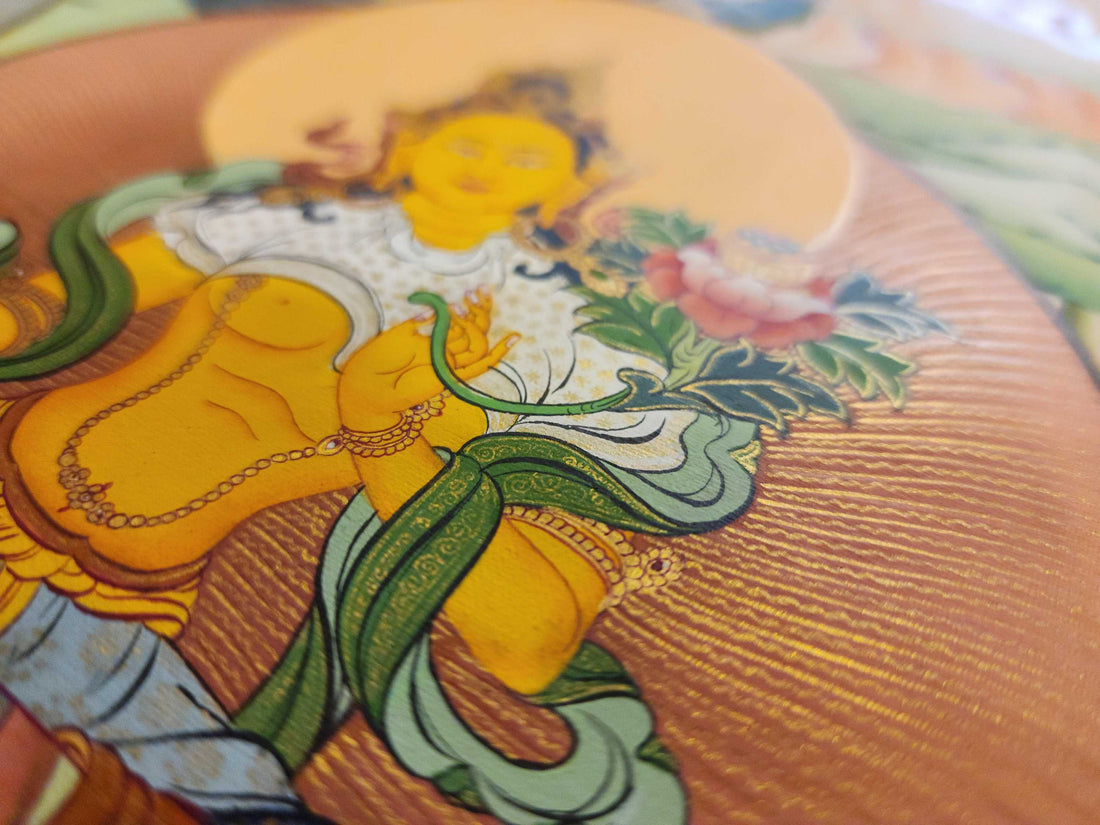
The Eight Auspicious Symbols in Tibetan Thangka Art and Their Meanings
Share
Introduction
Tibetan Thangka art is rich with symbols, each carrying deep spiritual meaning. Among the most revered are the Eight Auspicious Symbols. Sacred emblems representing blessings, enlightenment, and the Buddhist path. Found in temples, manuscripts, and Thangka paintings, these symbols hold both religious and cultural importance in Tibetan Buddhism.
What Are the Eight Auspicious Symbols?
Known in Sanskrit as Ashtamangala, these eight symbols are believed to have been offered to the Buddha upon his enlightenment. In Thangka art, they are often painted individually or woven into larger compositions, each one representing a different aspect of spiritual life.
The Eight Symbols and Their Meanings
The Endless Knot (Shrivatsa)
Represents the interconnectedness of all things, the union of wisdom and compassion, and the infinite cycle of life.
The Lotus Flower (Padma)
Symbol of purity and spiritual awakening. Blooming unstained from the mud, like enlightenment arising from the human condition.
The Dharma Wheel (Dharmachakra)
Represents the Buddha’s teachings and the path to enlightenment. The eight spokes signify the Noble Eightfold Path.
The Victory Banner (Dhvaja)
Signifies the triumph of wisdom over ignorance and the victory of spiritual knowledge.
The Golden Fish (Suvarnamatsya)
Symbolizes freedom from the ocean of suffering and fear, representing spiritual liberation.
The Treasure Vase (Kalasha)
Represents an endless source of spiritual and material abundance.
The Parasol (Chatra)
A sign of protection from harmful forces, both physical and spiritual.
The Conch Shell (Shankha)
Symbol of the spread of the Dharma. The sound of truth echoing in all directions.
Symbol Placement in Thangka Art
In Thangka paintings, these symbols may surround a central deity, appear in the border designs, or be painted as stand-alone blessings. Their placement often reflects the intended spiritual purpose of the artwork. From meditation to ritual offerings.
Modern Relevance
Even today, the Eight Auspicious Symbols are widely used in Tibetan culture. They are printed on prayer flags, carved into temple walls, and painted on Thangkas to invite blessings, harmony, and positive energy into homes and sacred spaces.
Conclusion
The Eight Auspicious Symbols are more than decorative motifs. They are visual prayers carrying centuries of wisdom. In Thangka art, they remind us of the path toward compassion, wisdom, and ultimate liberation.
